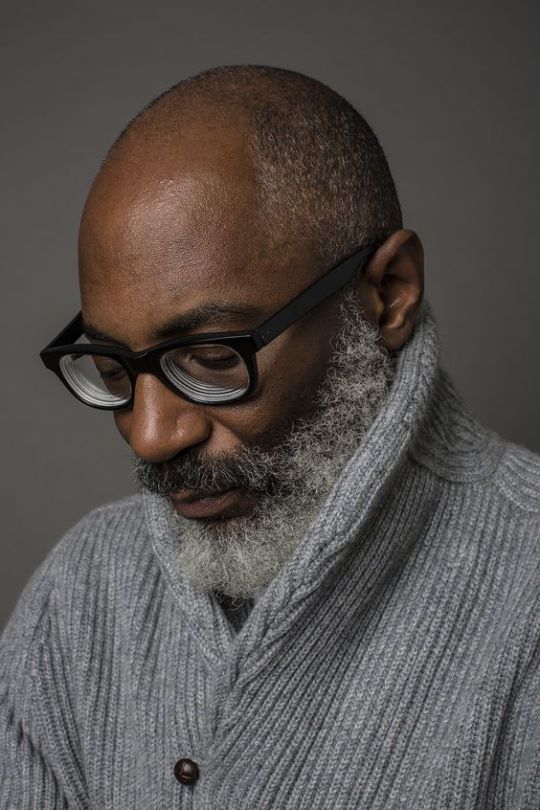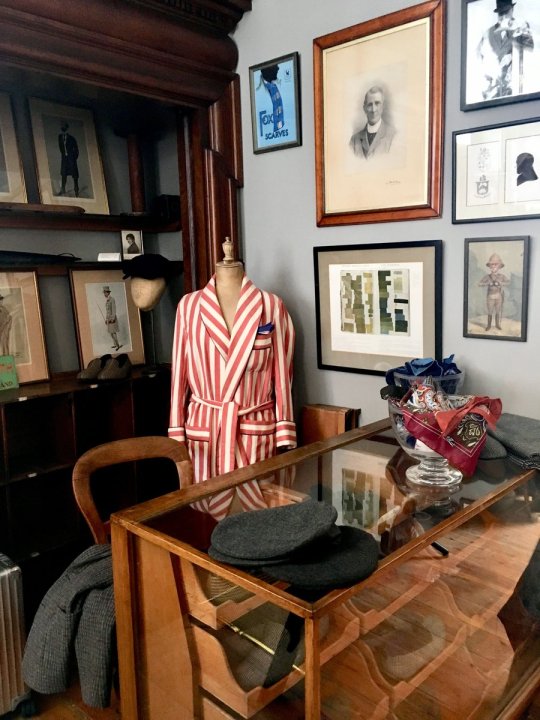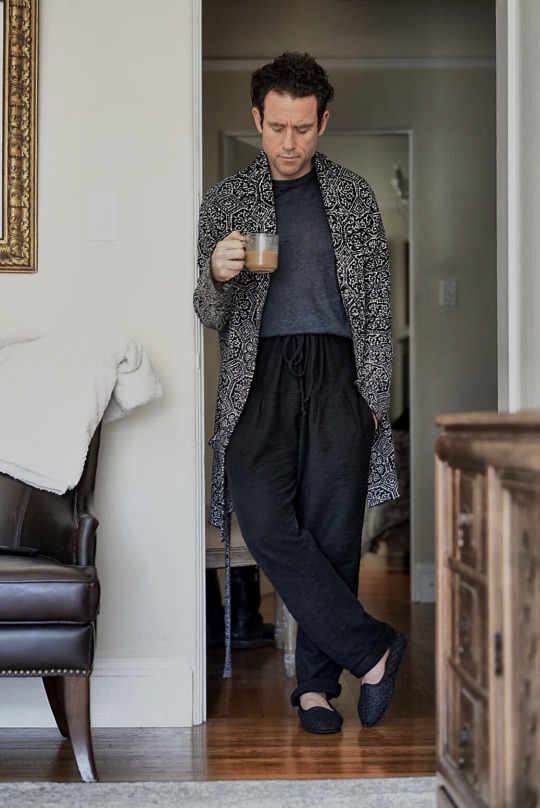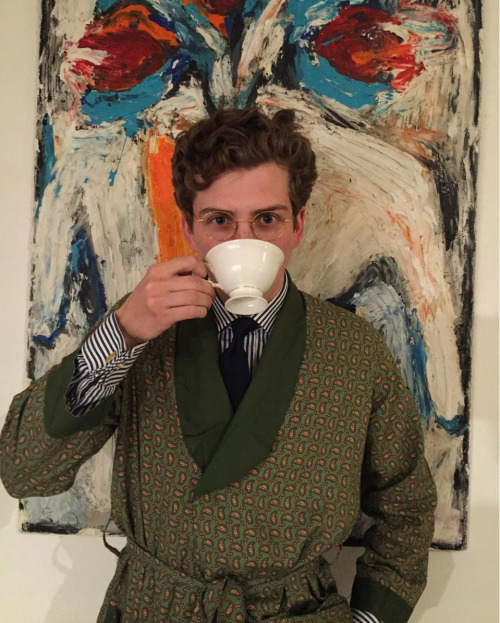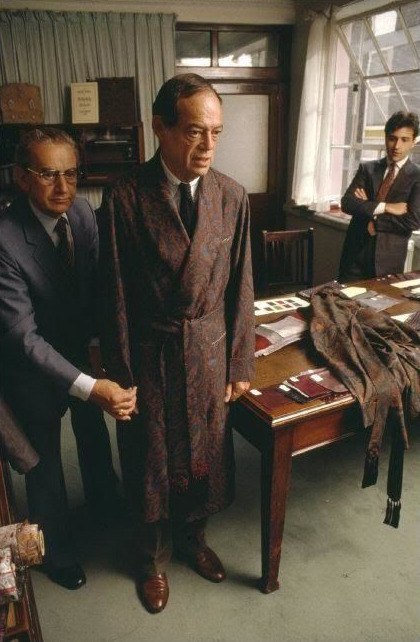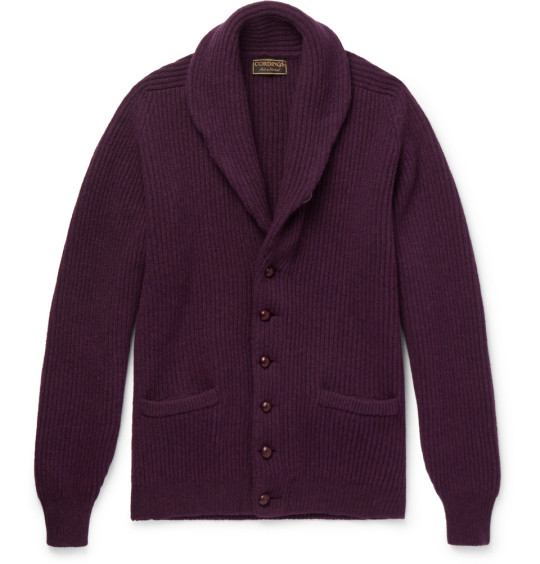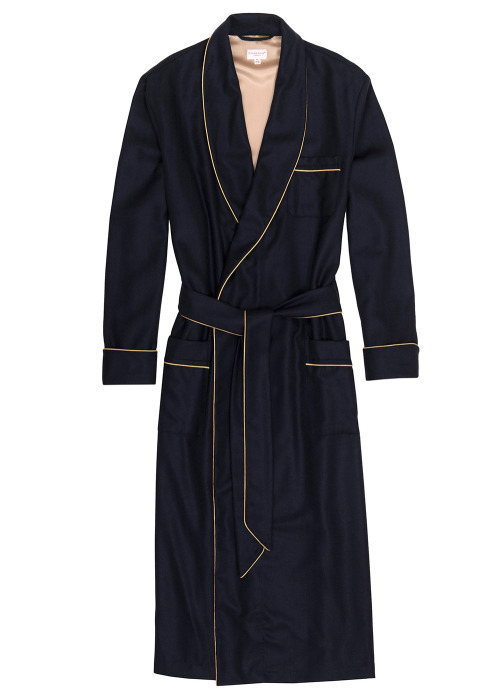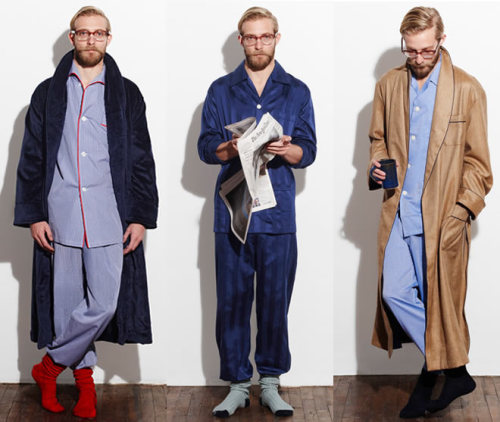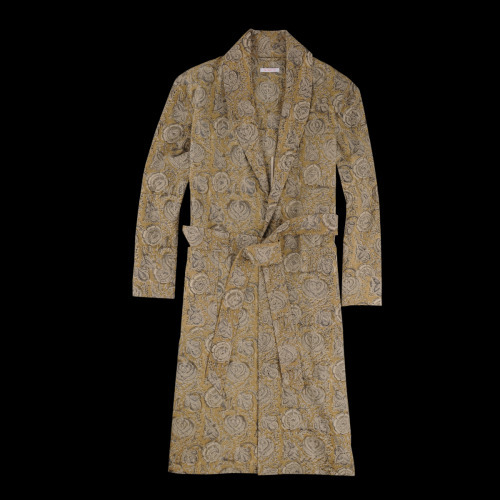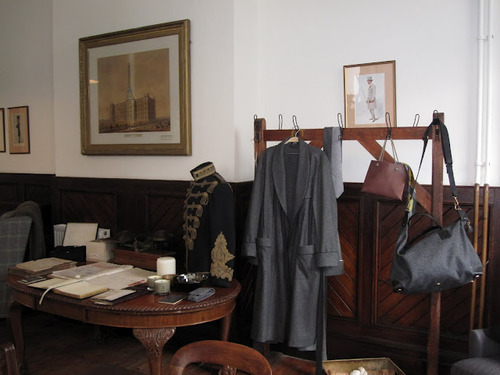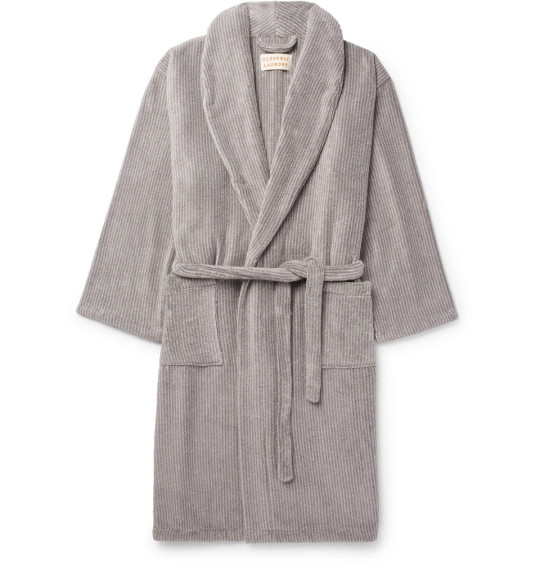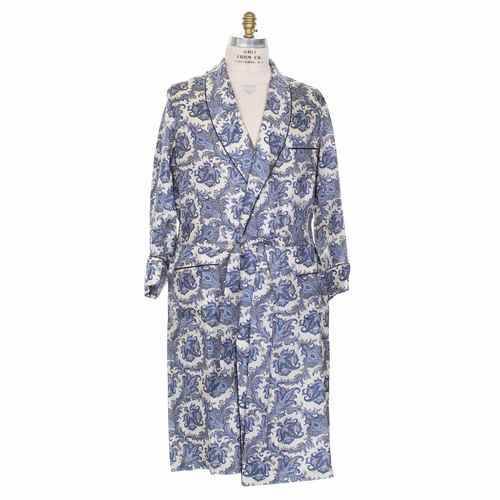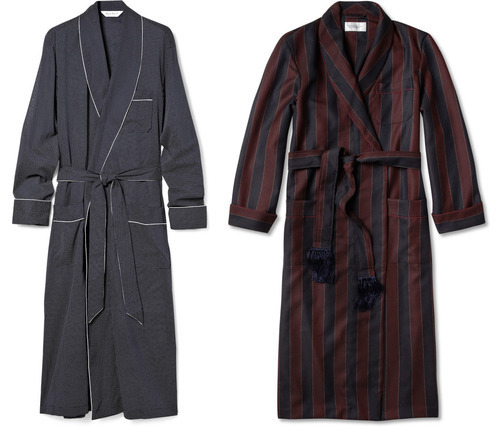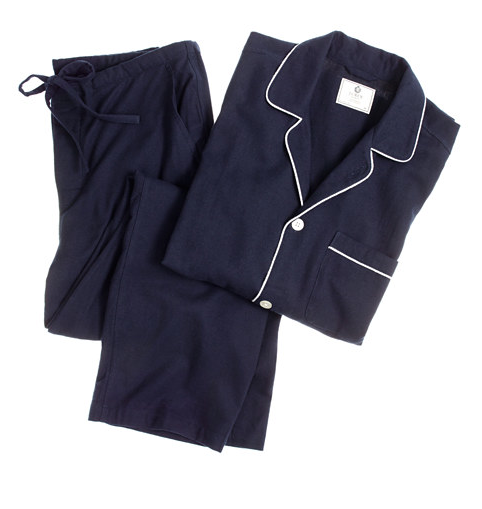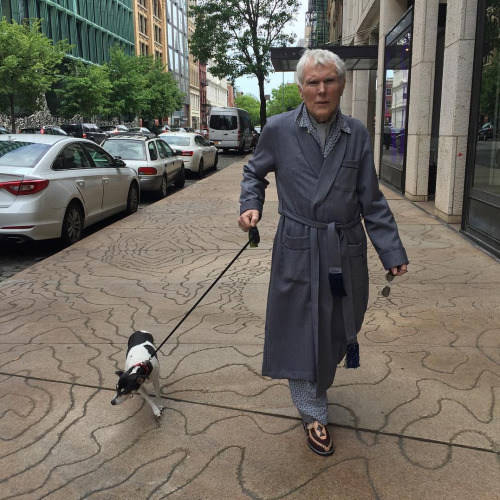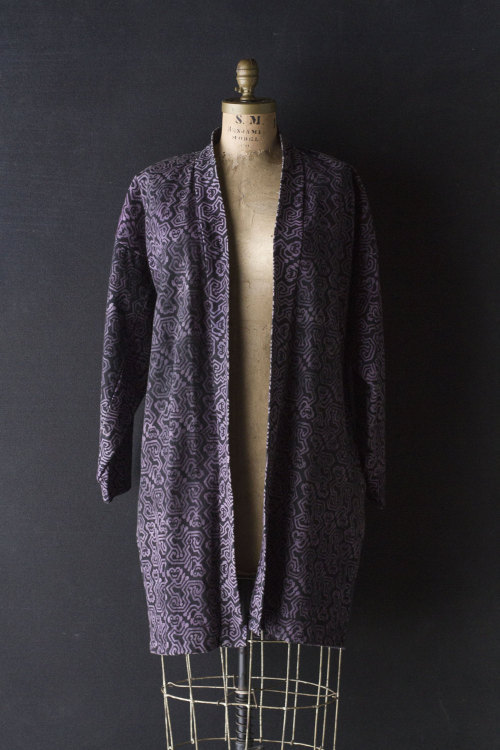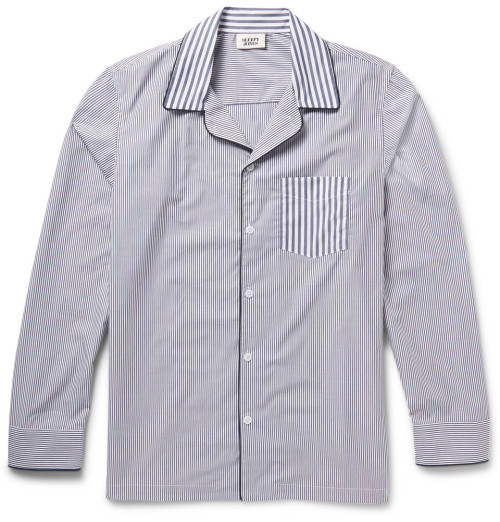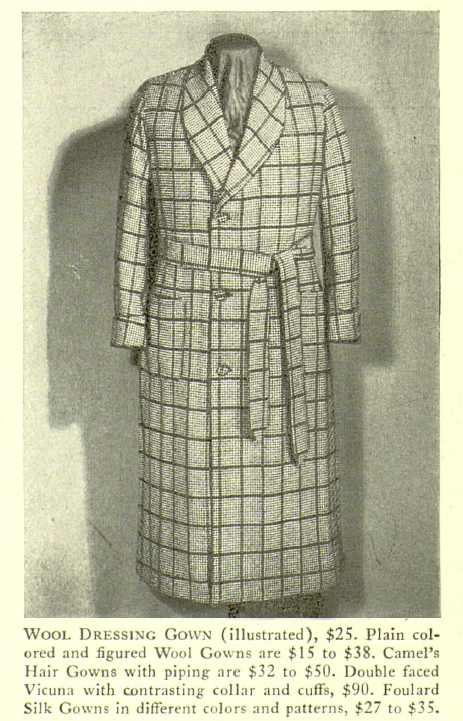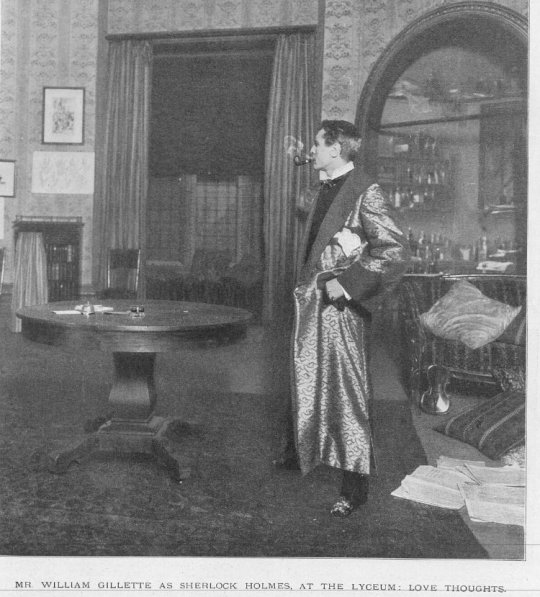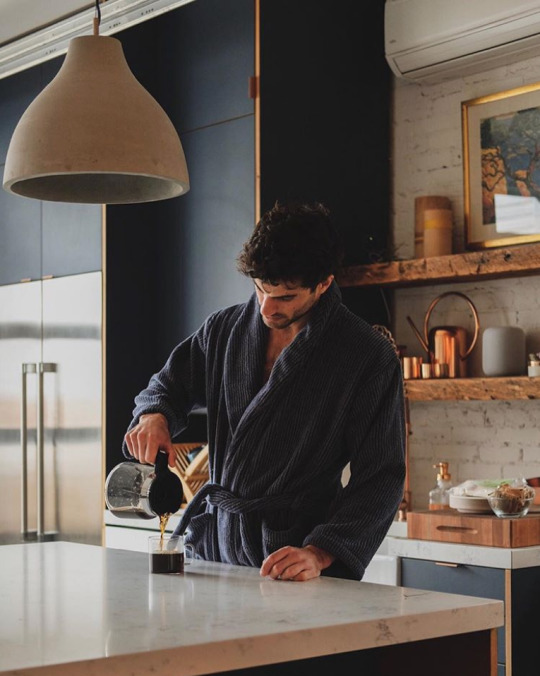
Winter style is often presented as sled riding through some New England forest, or enjoying a hearth redolent of roasting Indian corn, but reality is often less romantic. This time of year is flu season, which means for many people, winter at some point will be about Robitussin, hot tea, blankets, and cough drops. I’ve been holed up at home for the past few days trying to fight off a stubborn cold, stay warm, and sleep through the night despite fits of coughing.
Nothing will cure a cold except time, but there are things you can do to make yourself feel better. The Chinese have an herbal remedy called Nin Jiom Pei Pa Koa, which does wonders for a sore throat, even if it tastes awful (I drink hot water mixed with a scoop of honey instead). Nasal sprays can help manage congestion, although you don’t want to use them for more than three days in a row. And wearing good loungewear feels so much better than laying around in sweatpants and a t-shirt.
Years ago, Jacob Gallagher at The Wall Street Journal wrote a piece exploring whether men still wear pajamas. There aren’t many, and among those who do, some are apparently trying to sell others a set (Andy Spade, one of the founders behind Sleepy Jones, was quoted). The reasons given for PJs were predictable – they confer a better sense of self-respect when you’re at home (I have none to begin with, so that matters little), and they allow you to look presentable should an unexpected guest drop by (I have no social life, so that matters even less).
Those justifications seem like a stretch, but along with comfort, I find good loungewear helps you get out of bed in the morning. In the winter, you can stay wrapped under your covers forever if your choices are protecting yourself with a blanket or slipping into a chilly pair of jeans. PJs are comfy, reasonably warm, and help you transition from the bitterness of waking up to the joy of putting on your regular clothes. For guys who hate getting up in the morning, like me, good PJs and a robe are make the routine feel a little better. Especially when you’re sick.
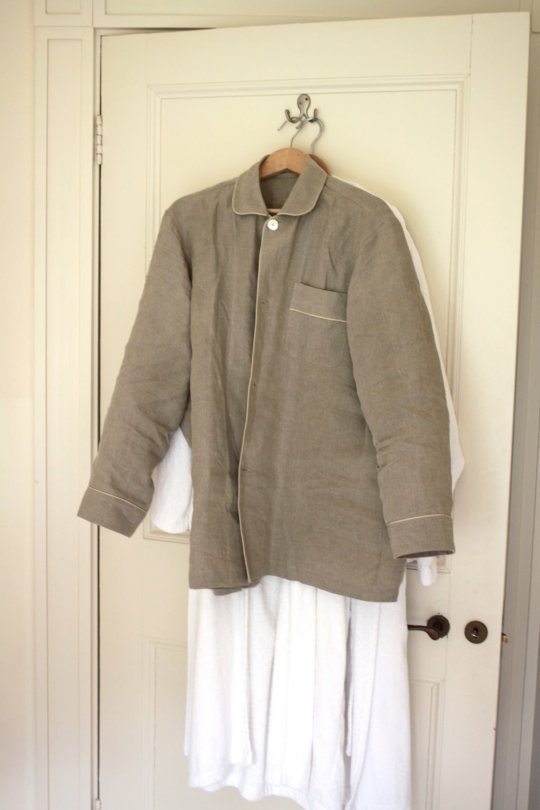
Simon Crompton at Permanent Style recently caught some flack for getting bespoke pajamas, which some considered an absurd indulgence. But much like dress shirts, custom pajamas and dressing gowns are often not much more than high-end ready-to-wear. The construction here is simple and straightforward, and the fit doesn’t need to be terribly exact since PJs ought to fit loosely. The main advantage of going custom is that you get to choose your details and fabrics.
I like pajamas in pure linen or cotton-linen blends since they wear cool and airy. Linen can start off a bit scratchy, but it eventually softens into a buttery, springy fabric after a few washes (bed sheets are called linens because they used to be made from the material). Silk pajamas can feel luxurious, but they have to be handwashed. For the lazy, like me, there’s Tencel, a type of rayon that’s made from cellulose pulp. Companies dissolve the pulp using a dry jet-wet spinning process, then extrude it into fibers like how wheat turns into spaghetti. The result is a beautifully soft material that feels and drapes like silk, but can be machine washed and then hung dry. Merchant & Mills, a specialty fabric supplier based in the UK, has some lovely pastel-colored Tencel fabrics right now, although I prefer their Tencel-linen blends (they have more body).
Pajamas alone won’t keep you warm in the winter, especially if you’re feeling sick, so it’s nice to have an accompanying dressing gown. In another generation, men used to wear these to meet their valet (the male equivalent of a lady’s maid), but in more practical and relatable experiences, I find they’re great for staying warm in the morning when making breakfast. Heavy wool flannel and silk will be more insulating, although cotton is easier to throw on and clean when necessary. Since cotton feels comfortable against bare skin, it doesn’t need to be lined like the other materials (which, when lined, can feel chilly at first if you’re not wearing proper PJs).
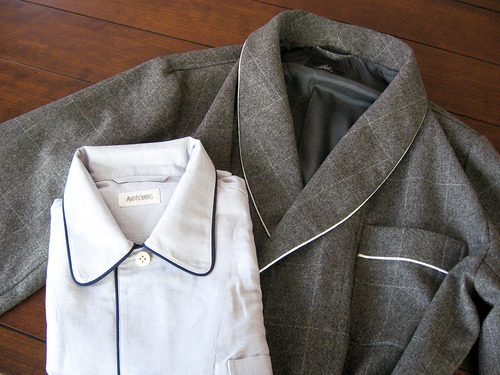

If you’re feeling fancy, you can get your sash tie finished with hand-knotted tassels. Supposedly, these tassels are only made in the UK through a small cottage industry, and the last woman in the trade retired last year. I checked with every bespoke shirtmaker I know of last year to see if they could do a sash tie with hand knotted tassels, and only Budd Shirtmakers had a box left sitting under a desk somewhere. Luckily, they had one in navy to match my navy silk dressing gown, pictured above.
Despite few people wearing PJs nowadays, the market for ready-to-wear sleepwear is surprisingly good. You can get quality pajamas from almost any high-end shirtmaker, such as Budd, Turnbull & Asser, Emma Willis, Charvet, and Ascot Chang (the last of which is who I use). Companies such as Derek Rose specialize in traditional sleepwear, while relatively newer upstarts such as L’Hotel, La Perla, and Sleepy Jones are trying to pull in a younger market. Sleepy Jones makes vaguely hip looking PJs, although I find the cuts too slim and constricting for comfort. L’Hotel captures the romantic look of another era, almost like the what you’d expect to find in a 1950s French hotel. For something more affordable, check J. Crew, Brooks Brothers, and Ralph Lauren.
It’s harder to find good dressing gowns. You can get robes at any number of places, such as J. Crew, Pendleton, and Brooks Brothers, but they’ll often be made from flimsier brushed cotton flannels. Perfectly nice, but they lack the heft and warmth of old-school gowns. For something with a bit of weight, you can try Derek Rose and The Merchant Fox, but they’re dearly expensive (bespoke here is surprisingly cheaper, but not much more so). Bathrobes are readily available at Manufactum, Hammacher Schlemmer, Parachute, and Cleverly Laundry, although those aren’t really the same thing. Bonsoir has some relatively affordable pieces, although I’d be cautious about the quality of the cashmere at those prices.


For something less frou-frou, a shawl collar cardigan will feel like a comforting friend when you’re sick, and they can be easily thrown over a t-shirt or plaid flannel button-up. I mostly think of shawl collar cardigans as loungewear anyway – something to wear instead of a sport coat during the holidays, or layer with jeans while watching TV. My favorites are ones that are chunky enough that they function like outerwear, but feel soft and cozy enough for wearing around the house.
To get that chunky feel, companies have wrap more plys into their yarns, which means they also need more material. With all the price multipliers throughout the supply chain, that means a good chunky shawl collar cardigan will typically run you about $300 (or more depending on the material, construction, and design). If you’re up for a splurge, Scott & Charters, The Armoury, Cordings, O’Connell’s, and Drake’s are particularly nice. They’re dressy enough to be used with wool trousers on a day-to-day basis, but can also double as body blankets at home. You can also sometimes catch William Lockie pieces on eBay for not too much money.
For something a little more casual, there’s Inverallan for cabled designs and RRL for workwear-y Southwestern-inspired patterns. Abercrombie & Fitch’s cardigans pill more easily, but they’re also handsome and only $88 (just use a sweater shaver to manage the pilling). You can wear them with soft soled moccasins from Maine. Once the wrap-around leather construction conforms to your feet, you’ll find that few things feel as comfortable. I get mine from Town View Leather, pictured above, but you can also find them through Quoddy and Willymoc.
There’s a scene at the end of An Englishman Abroad – a BBC television drama about the real life events of Guy Burgess, who was a British turncoat that passed thousands of documents to his Soviet controllers during the Cold War. Burgess was exiled to Moscow for his crimes, and in the film, he’s shown as missing the everyday cordialities of an Englishman’s life. So his friend Coral Browne goes shopping for him in London’s West End on his behalf, picking up suits from his tailor E. Tautz and shoes from his shoemaker John Lobb. Burgess, however, really wants a pair of pajamas – in white or off-white, maybe navy blue silk. “Only then,” he says, “will my outfit be complete.” However, his friend Browne is denied at Seka (which is supposed to be Sulka), and the salesman says that the firm is only too happy to be rid of a national traitor as a client. She sharply replies, “must traitors sleep in the buff?“ Even with bespoke suits and shoes in hand, Browne knew the importance of good pajamas.
